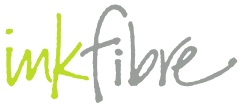COLOUR
Thursday last week I had the fortune of having three amazing women visit the studio, such excellent friends. I was really moved by their genuine interest and enthusiastic feedback to what has been produced so far. A lot was said regarding colour and trending, and how important it is to do the research around the latter to gain insight and better understanding of what may be ephemeral and what may be timeless. I presented them with four colour alternatives, generating a most candid and engrossing conversation regarding hues, personal preferences and how Pantone holds an important part in the design vernacular--A had the Pantone forecast for 2013 handy on her phone screen. After much consideration and editing, we decided on three colours, two of which have already been mixed and tested.
Thursday last week I had the fortune of having three amazing women visit the studio, such excellent friends. I was really moved by their genuine interest and enthusiastic feedback to what has been produced so far. A lot was said regarding colour and trending, and how important it is to do the research around the latter to gain insight and better understanding of what may be ephemeral and what may be timeless. I presented them with four colour alternatives, generating a most candid and engrossing conversation regarding hues, personal preferences and how Pantone holds an important part in the design vernacular--A had the Pantone forecast for 2013 handy on her phone screen. After much consideration and editing, we decided on three colours, two of which have already been mixed and tested.
 |
| Red is the colour that I am the most intrigued by since I really don't use it in my work, yet it is part of the new palette. |
The weekend provided the time for registration printing. There are two important issues that make registration somewhat difficult on the personal level: One, there is no registration bar on the table. Two, I'm very short, and the table is somewhat tall, therefore, large format printing is not an option given that I print on my own, and my arm span is not adequate.
So, I have devised a couple of systems that I think could work for railroaded registration printing. For those new to the trade, regular registration printing happens on a perpendicular [imaginary] line in relation to the selvedges (the finished edges) of the cloth. A railroaded print is parallel to these selvedges, therefore, it allows the [not very tall] printer to be close to the edges of both fabric and table, and with the use of a reasonably sized screen, printing becomes accessible.
For the first printing system, tee plates were attached to the screen (F helped me), to create a natural corner edge between the screen and the table, facilitating the printing process while sliding the screen to the registration markers*. It worked fine, but the table edges are a bit uneven, generating an off-register of a few millimetres, which may not sound like much, but it creates substantial gaps or overlaps in the print.
This week I will try the second system, evaluate the results and resume production. The only downside so far for these methods is waste of substrate at the centre, easily resolved if the printer is taller and has longer arms.
*A great and immediate resource for repeat pattern design is Kim Kight's book: A Field Guide To Fabric Design.
*A great and immediate resource for repeat pattern design is Kim Kight's book: A Field Guide To Fabric Design.

